Look at the Stars is a paper and pencil type game that uses white markers to connect stars to make constellations. Cards and flipped out and everyone playing will use those lines to place between stars on their player board. Look at the Stars is designed by Romain Caterdijan, and published by Bombyx and brought to the US by Pandasaurus Games. It takes 20-30 minutes to play, can be played by 2-9 players, and is rated for those 8 years old and older. Pandasaurus Games also has published Sea Salt & Paper, Aurum, District Noir, as well as one of my favorites, Orichalcum.
What’s In The Box?
- 8 different dry erase night sky boards
- 30 night cards
- 19 bonus cards
- 8 dry erase markers
- 8 wipes
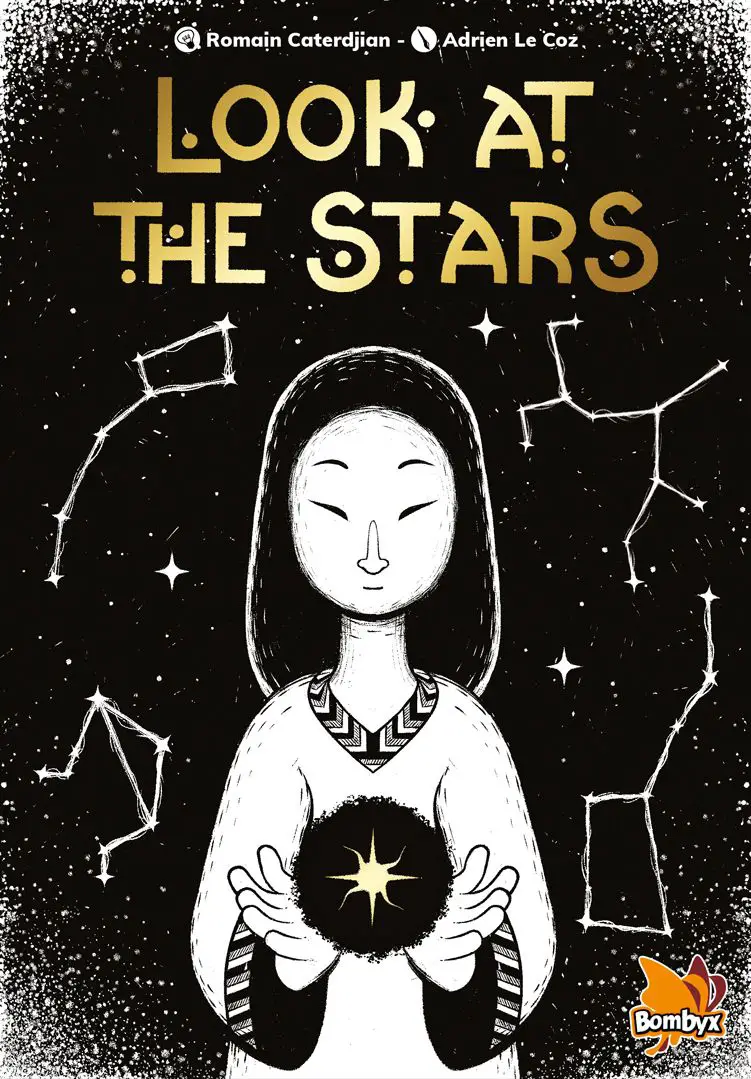
How’s It Play?
Players are drawing lines on their board to form different constellations of different sizes. Gradually the sun rises and makes it so you can’t continue forming constellations on the bottom of your board and it forces you to move up. The game is 18 turns long which happen simultaneously. Players gain points for making constellations of different sizes as well as gaining points from the bonus cards chosen that game.
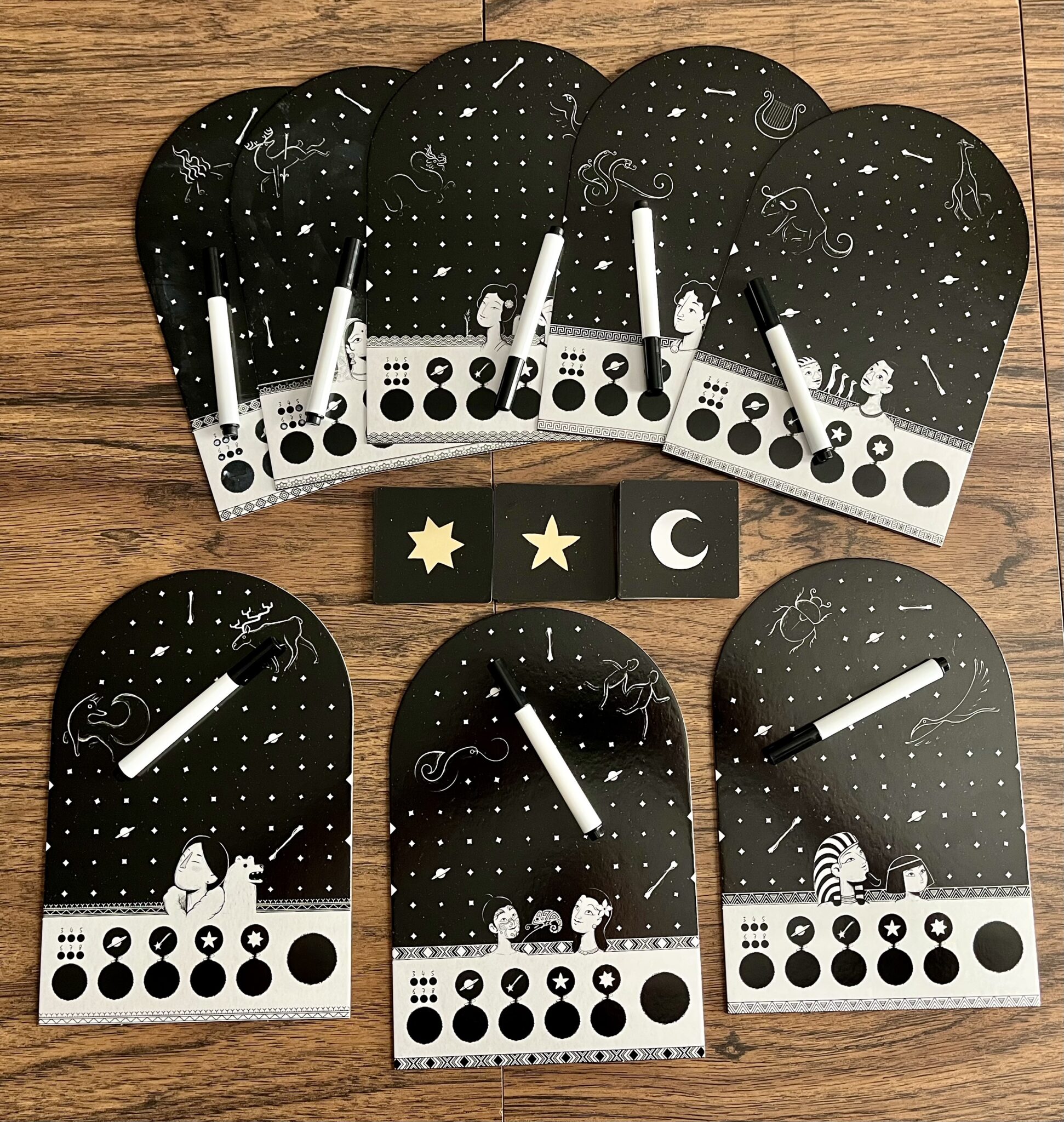
Each player will take their player board and a marker. The top night card for that round is flipped over, and players will simultaneously draw the lines shown on the night card onto their board . A line must always connect 2 adjacent stars orthogonally or diagonally. Lines shown on a night card must be drawn as it shows, except players can rotate the card to change its direction, but no mirroring the lines. Diagonal lines can also intersect, and lines can come off of the same star in multiple directions. Lines cannot touch planets, shooting stars, or any object other than a line or a star.
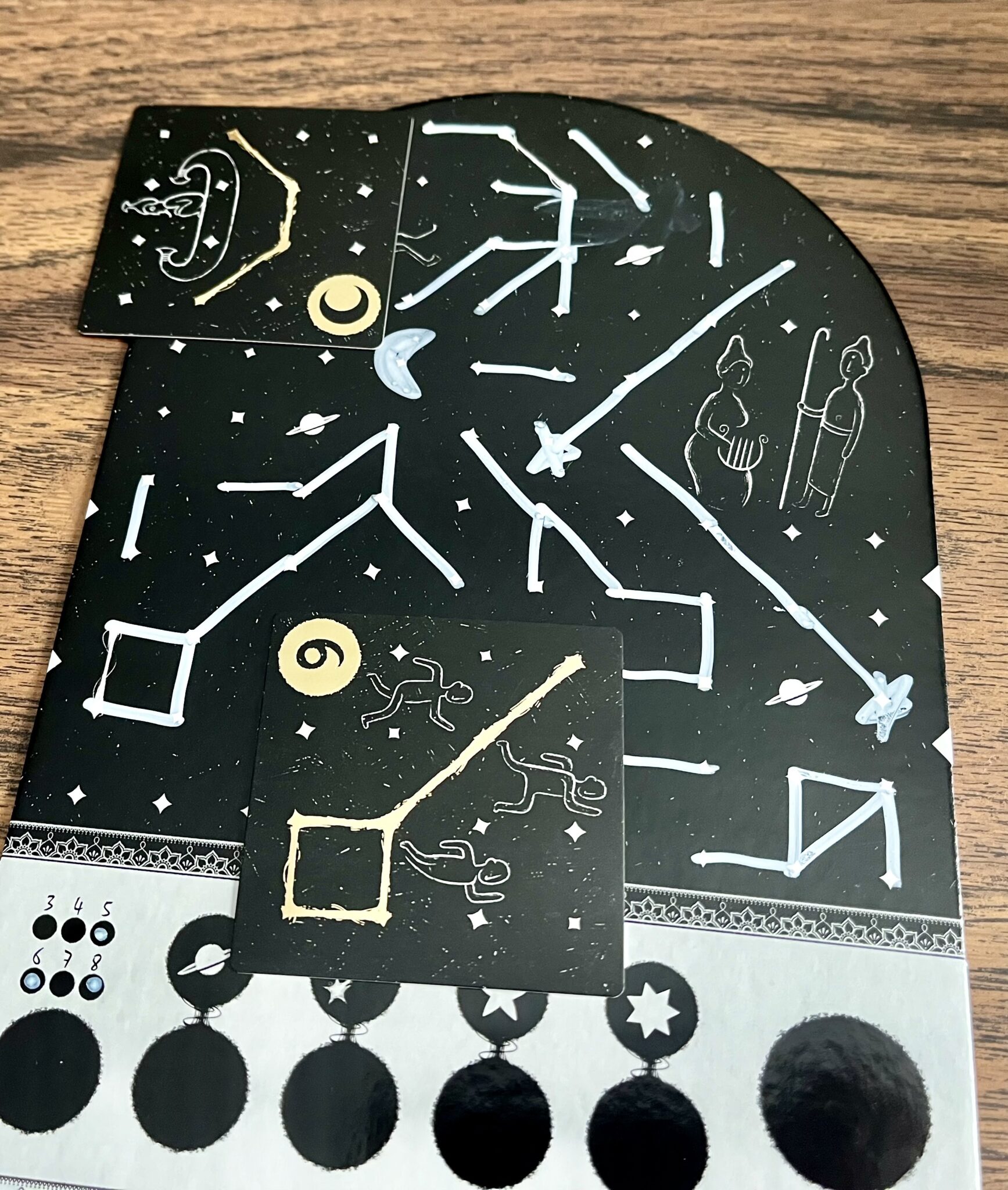
After marking the lines on your board, a new night card is flipped over for all to continue making lines. The night cards are placed into 3 stacks, one for each round. After the first stack of cards have been performed, there is a triangle marked on the side of the board. You will not be able to mark anything below that mark any longer. This will happen a second time after the second stack is finished, leaving just the top of the board to be used.
Whenever a shooting star appears on a night card, you do not have to draw it, but if you do, you can draw it diagonally for 1, 2 or 3 lines long. It can never touch a star that has already been used and vice versa. It’s also advisable to close your eyes and make a wish upon that shooting star.
After all night cards have been flipped over, the game ends and players will count up their points. You will score points for completing different size constellations, each scores the number of points according to how many lines are used in it. If you have 2 or more constellations of the same size, only 1 will score points. Planets score points equal to the number of constellations adjacent to it. Shooting stars score 1 point for each line in it. Bonus cards will score points. This will be done each time the shown shape is shown on a player’s board. Even if they have additional lines, they will still score the points. The other bonus card will give you additional ways to add more to gain points. The player with the most points, wins the game.
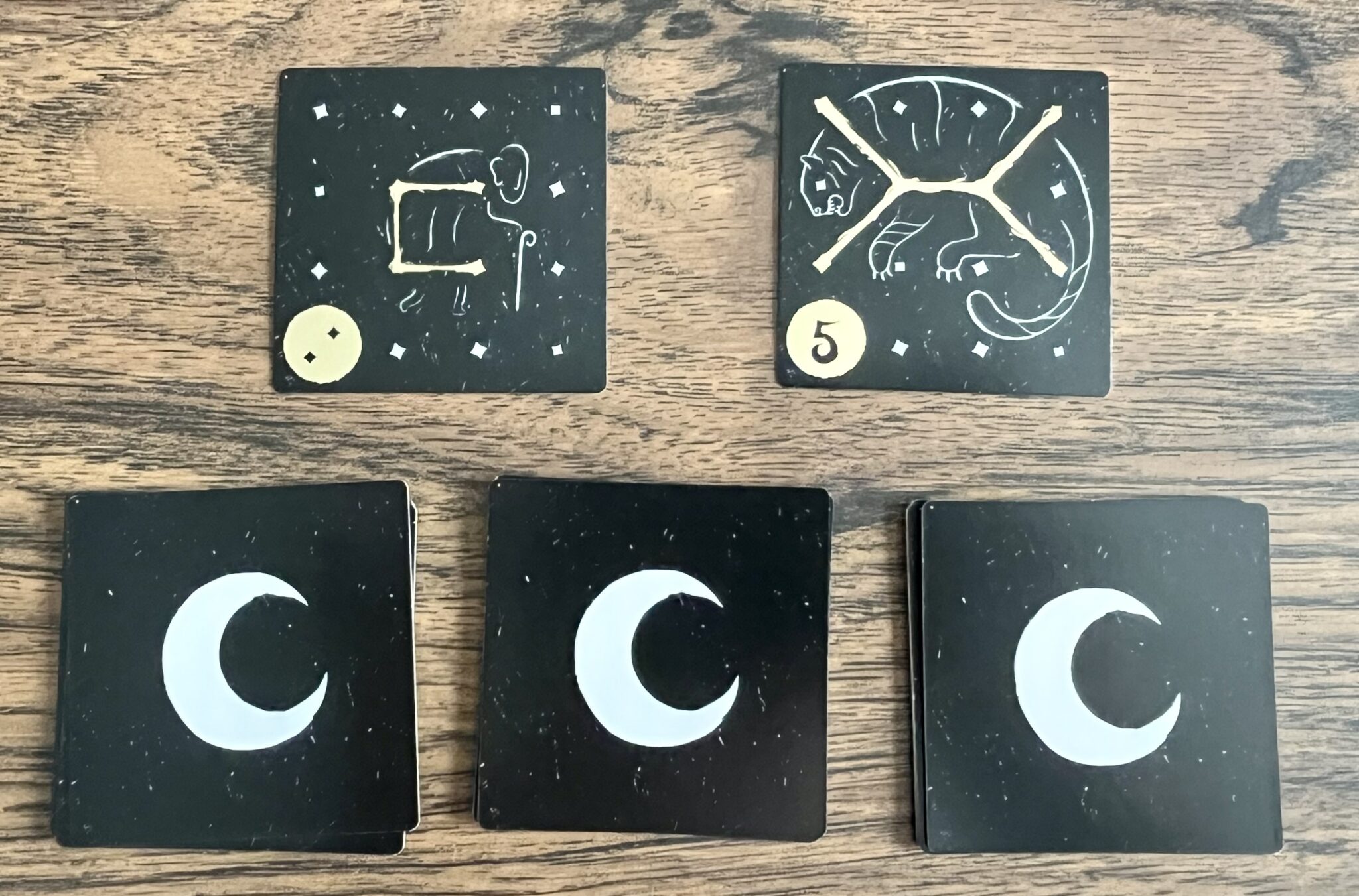
The Verdict
The game is a nice quick game of putting together those cards to form different constellations. Planning is very much required in this game, or developing a system to add those lines. It can get tricky as the game board starts getting smaller, and you are unable to continue using certain areas as the game goes on. Also, you find yourself needing to add to a constellation as it can’t be the same number of others, but the cards might narrow your choices because you have to draw the lines just like they appear on the card.
When we first played the ‘Look at the Stars’, we just kind of made it up as we went on, but as we did that we found mistakes that happened. After that, we learned from those mistakes and were able to have a better strategy, not loosing space or making sure we try to make as many constellations of different sizes as well as trying to form the shape on the bonus cards as much as possible.
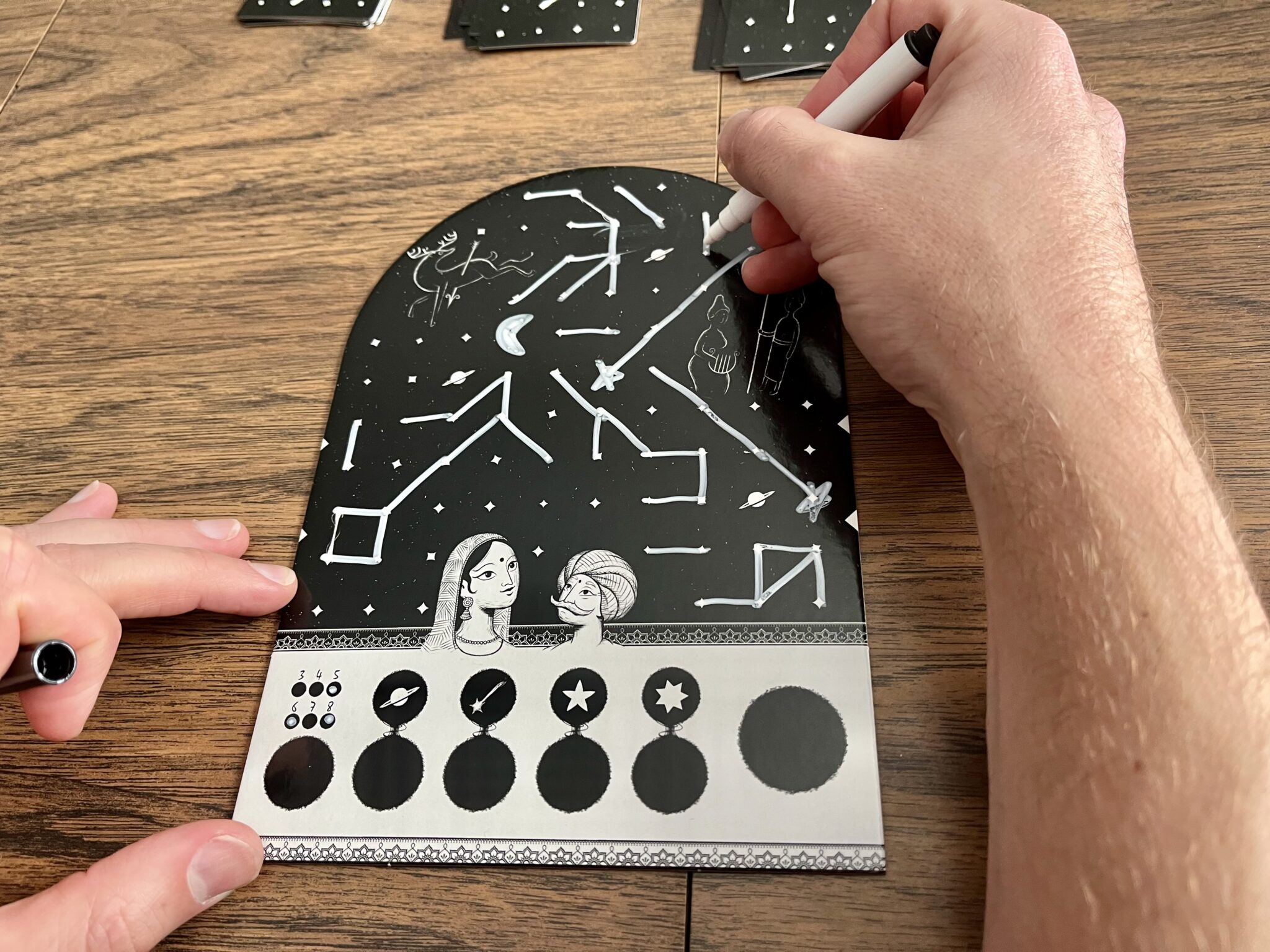
The components are pretty awesome. It’s a white marker, and you use it on the black board. And it really helps with time with the theme as the end of the game you see all the constellations you have made. I was impressed how their choices of components really helped with the effect and theme of the game.
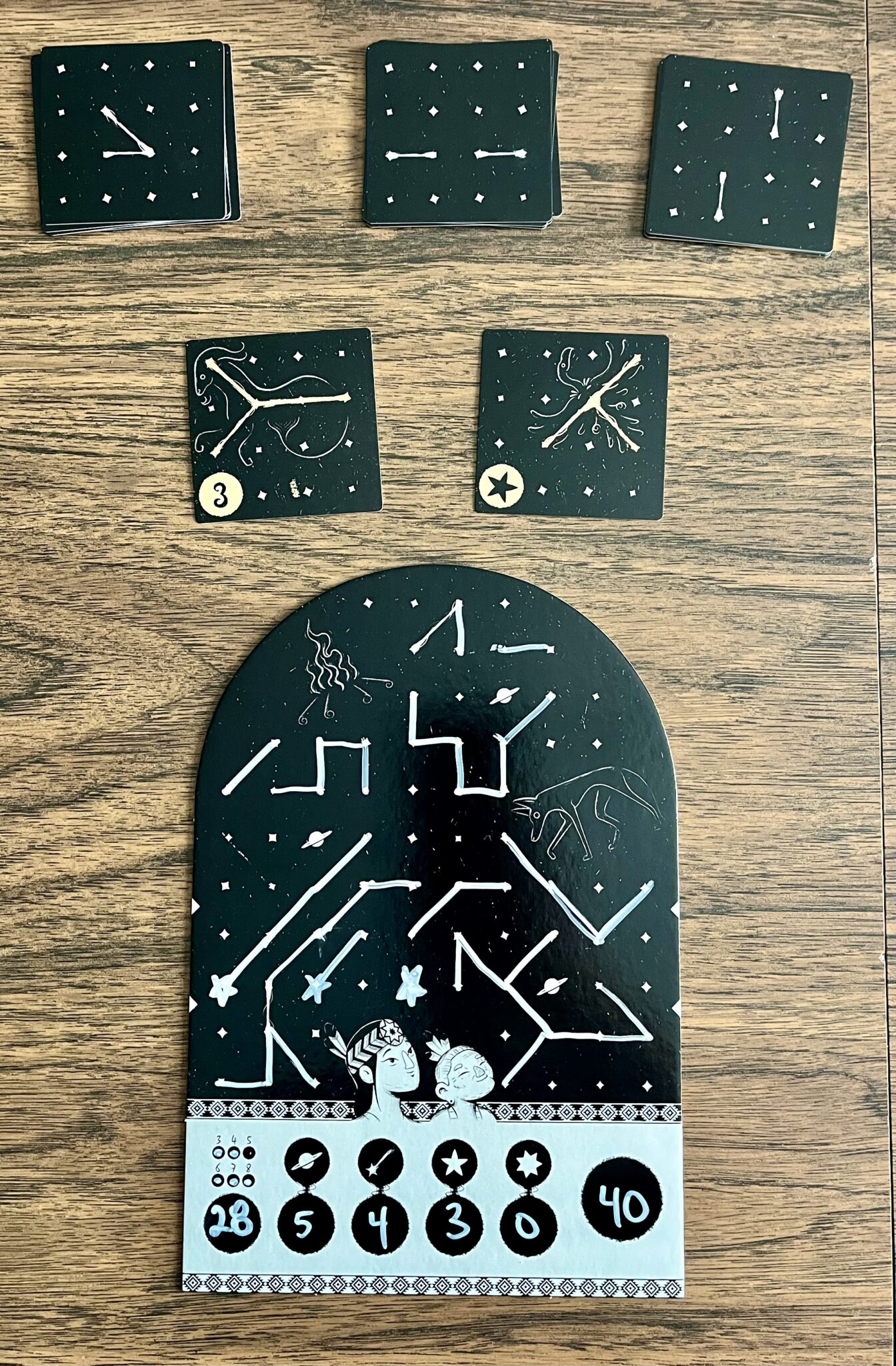
I will say, some of the excitement did wear off after the first couple plays, as its the same game over and over again, which is just figuring out where to place lines. I don’t see it lasting on my shelf for a long period of time, but the kids were excited on how the game worked and what they got to do when playing it. I really like how you can play up to 8 players, but its not a game I would pull out to play for someone who isn’t into board games. It would be more of a game to play as a warm up for game night or a quick game with my family.
I also like the touch of including 8 different populations that also include constellations in that area. That just shows that some research was done for the game. Overall, the game is fun and quick at first but won’t last forever. It’s a game that can play with a large group of people, although I felt better playing with it as a 2,3 or 4 player game.
You can grab Look At The Stars now from the Pandasaurus shop or your FLGS at an MSRP of $29.95!
Images via Pandasaurus Games
Have strong thoughts about this piece you need to share? Or maybe there’s something else on your mind you’re wanting to talk about with fellow Fandomentals? Head on over to our Community server to join in the conversation!

